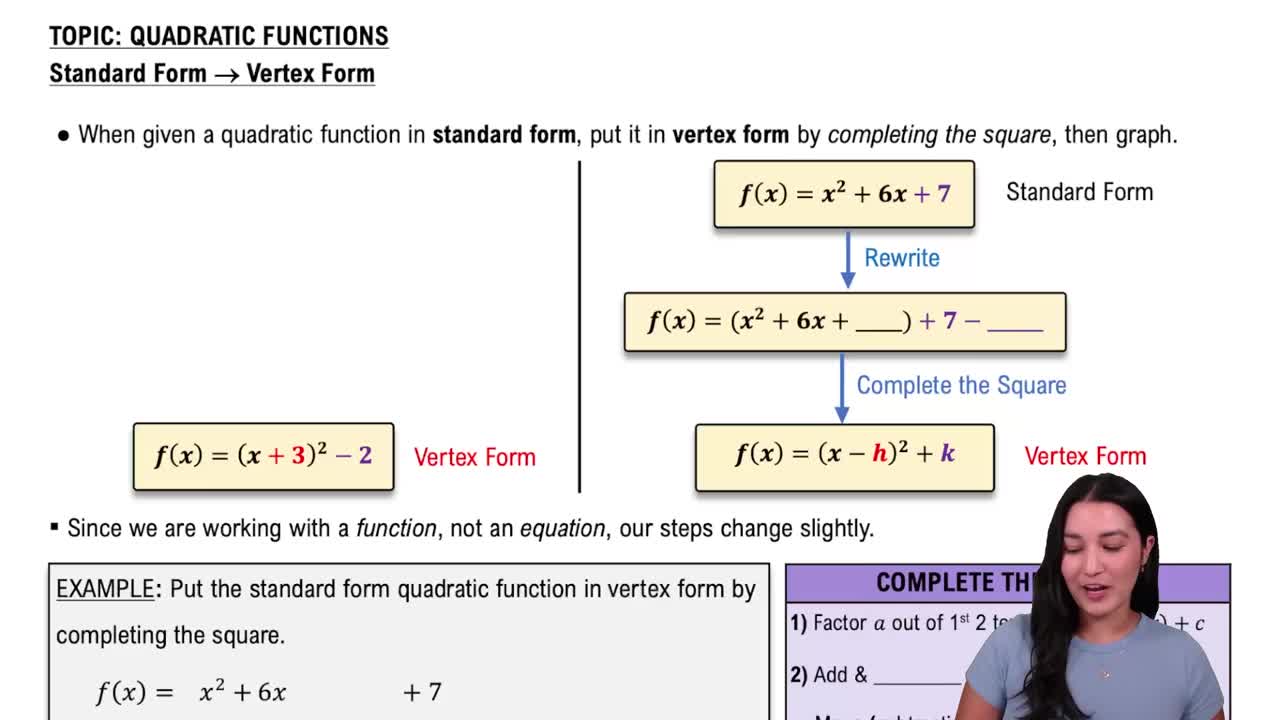Here are the essential concepts you must grasp in order to answer the question correctly.
Quadratic Functions
A quadratic function is a polynomial function of degree two, typically expressed in the form f(x) = ax² + bx + c, where a, b, and c are constants. The graph of a quadratic function is a parabola, which can open upwards or downwards depending on the sign of 'a'. Understanding the properties of quadratic functions is essential for analyzing their graphs and determining their equations.
Recommended video:
Solving Quadratic Equations Using The Quadratic Formula
Vertex and Intercepts
The vertex of a parabola is the highest or lowest point on the graph, depending on its orientation. The x-intercepts (roots) are the points where the graph crosses the x-axis, while the y-intercept is where it crosses the y-axis. In the given graph, the points (0, -20) and (3, -2) are crucial for determining the quadratic function's equation, as they provide specific coordinates that can be used in calculations.
Recommended video:
Standard Form of a Quadratic Equation
The standard form of a quadratic equation is often written as f(x) = a(x - h)² + k, where (h, k) is the vertex of the parabola. This form is useful for easily identifying the vertex and understanding the transformation of the graph. By substituting known points from the graph into this equation, one can derive the specific quadratic function that matches the given graph.
Recommended video:
Converting Standard Form to Vertex Form

 Verified step by step guidance
Verified step by step guidance Verified video answer for a similar problem:
Verified video answer for a similar problem:



 7:42m
7:42m